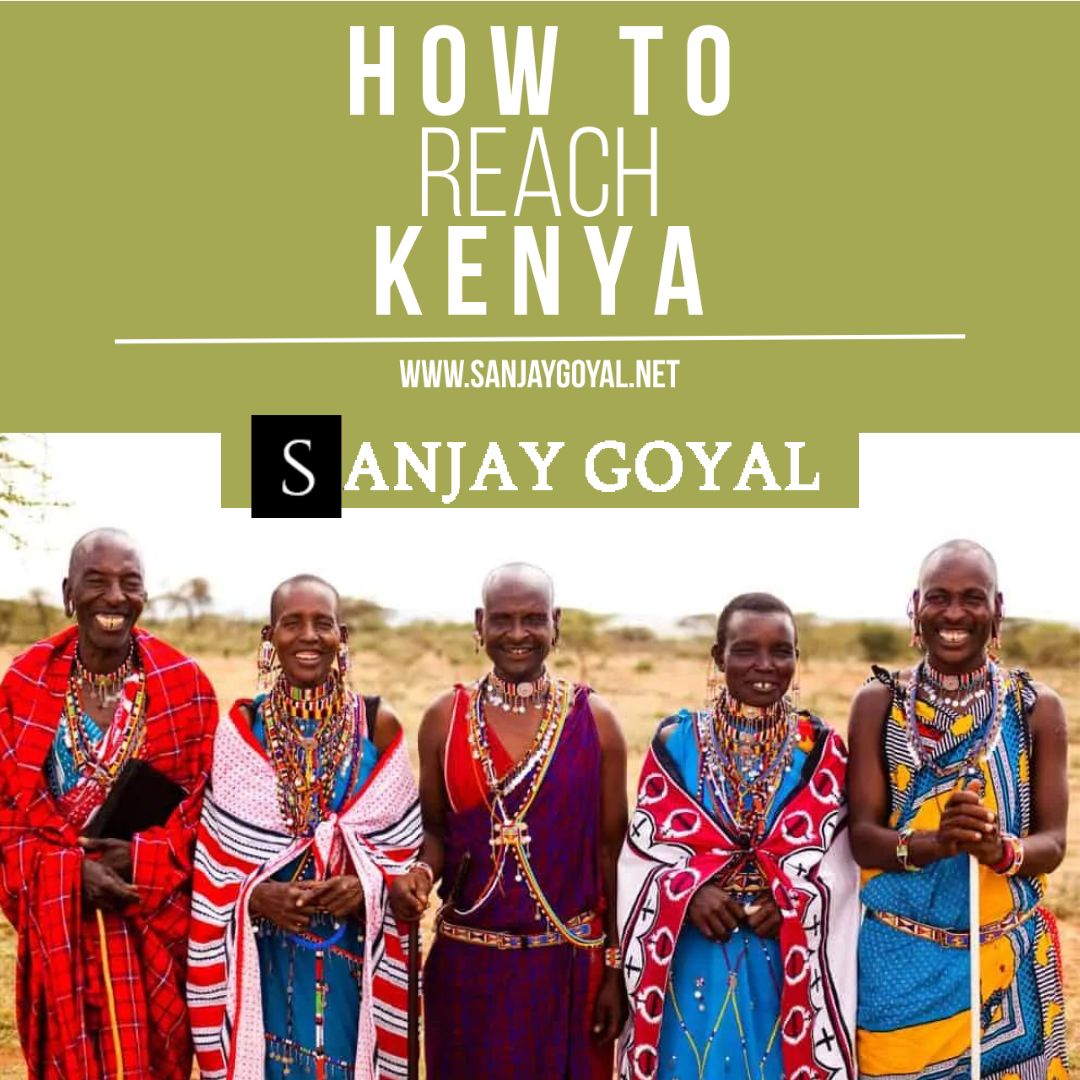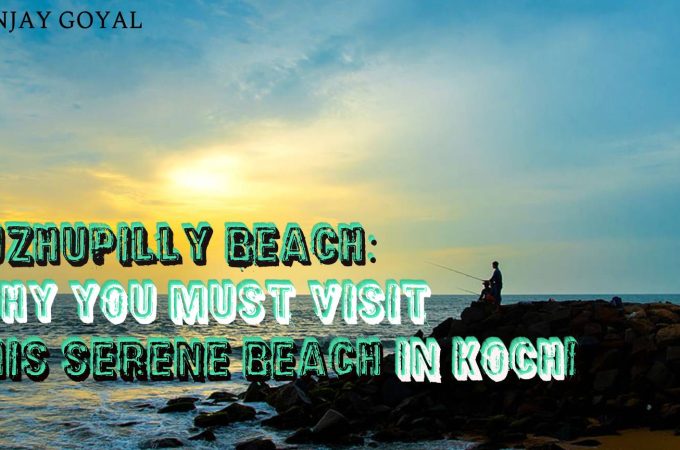
-
Save
How To Reach Kenya
Kenya has strong connections with its neighboring countries through good roads and waterways. Daily flights to Jomo Kenyatta International Airport in Nairobi link the country to the rest of the world. However, there are no direct rail services to Kenya at the moment.
Reaching Kenya by Air
To get to Kenya, you can fly into Jomo Kenyatta International Airport (JKIA) in Nairobi, which is the main airport. It has direct flights from major cities worldwide and serves as the main gateway to Kenya. For domestic flights within Kenya, you can use Nairobi Wilson Airport, located southwest of Nairobi. Airlines like AirKenya and SafariLink operate domestic flights from there.
Another airport in Kenya is Moi International Airport in Mombasa, on the coast. It’s mainly for domestic flights but also has some international routes, especially for travelers going directly to Mombasa. Kisumu International Airport and Eldoret International Airport are other airports in Kenya, but they’re not as busy as JKIA and Moi International Airport.
Many parks and conservancies in Kenya have special airstrips, which are convenient for safaris. These airstrips can be reached from Nairobi Wilson Airport.
You can read more about Airports in Kenya.
Reaching Kenya by Bus
Getting into Kenya by bus is also a good option. Buses frequently ply between Nairobi and Kampala, Nairobi and Arusha, Mombasa and Dar-es-Salaam and also Kisumu and Kampala.
Reaching Kenya by Rail
There are no direct train services connecting Kenya with neighboring countries. However, travelers can reach Kenya by train from countries like Uganda and Tanzania through various border crossings.
For example, in Uganda, trains run from Kampala to the border town of Malaba. From there, travelers can take buses or other transport to reach Kenya’s western regions. Similarly, in Tanzania, trains operate from cities like Dar es Salaam to the border town of Namanga. From Namanga, travelers can continue their journey to Nairobi or other parts of Kenya by bus or other means.
Reaching Kenya by Road
To reach Kenya by road, travelers can use border crossings from neighboring countries like Tanzania, Uganda, Ethiopia, and South Sudan. From Arusha, Tanzania, it’s about 280 kilometers to Nairobi, taking around 4 to 6 hours by road. From Kampala, Uganda, it’s around 500 kilometers to Nairobi, taking about 8 to 10 hours by road. Ensure you have necessary travel documents and be prepared for possible delays at border crossings. Also, follow road safety rules and consider road conditions, especially during the rainy season.
Reaching Kenya by Water
To reach Kenya by water from other countries, travelers can board cruise ships (like Mombasa-Zanzibar cruise) or cargo vessels heading to Mombasa, Kenya’s main seaport. These ships sail from various international ports and cross the Indian Ocean to reach Mombasa. Alternatively, ferry services operate on Lake Victoria, connecting Kenyan ports like Kisumu and Mbita with ports in neighboring countries such as Tanzania and Uganda.
Places to Visit In Kenya
1 .Mombasa Tourism
Mombasa, situated on Kenya’s southeastern coast, is a bustling coastal city known for its history, beautiful beaches, and vibrant culture. As Kenya’s second-largest city and a key port, it plays a crucial role in international trade. Its location by the Indian Ocean has led to a diverse mix of cultures, including Swahili, Arab, Indian, and European influences.
The city’s landmarks, such as the Mombasa Tusks commemorating Princess Margaret’s visit, the bustling Spice Market, and the imposing Fort Jesus, declared a UNESCO World Heritage Site, reflect its fascinating past and cosmopolitan character. Mombasa offers a quintessential Kenyan coastal adventure with warm hospitality, stunning coastline, and rich cultural experiences.
Must Know Before You Travel to Mombasa
- Local Transportation: In Mombasa, people mostly use tuk-tuks to get around. Taxis are also popular, but they can be pricier, typically costing between Ksh 1500-3000. If you’re looking for a cheaper option, try Uber or Taxify.
- Health Precautions: Travelers to Mombasa should take health precautions, including preventive malaria medicine, anti-insect sprays, and Yellow Fever vaccination with a certificate, especially when coming from risk regions.
- Prime Time for Water Adventures: October to March is ideal for snorkelling and scuba diving in Mombasa’s Diani area.
- Consistent Humidity: Mombasa maintains a steady humidity level of about 70%.
- Popular Combination: Many coastal visitors opt to blend their beach stay with a safari. Nearby parks include Tsavo East, Tsavo West National Parks, and Shimba Hills National Reserve.
2 . Masai Mara Travel Essentials
Weather: 13 – 24°C
Ideal duration: 2-3 days
Best Time: June to October Read More
Planning a Trip? Ask Your QuestionAlso Refered As:
Maasai Mara
“The Wild Heart of Africa in Masai Mara”
Masai Mara Tourism
The Masai Mara is a vast and the most renowned wildlife reserve in Kenya. It is home to the African Big Five and the Great Migration of millions of wildebeest, zebras, and other animals. It’s considered one of Africa’s Seven Natural Wonders and one of the world’s top attractions for nature lovers.
The Masai Mara offers a unique wildlife viewing experience and boasts the highest concentration of wild animals globally. Known as the “Home of the Big Cats,” it has the highest concentration of lions, leopards, and cheetahs in the world. Several lion prides have resided in the Masai Mara National Reserve for decades. Additionally, it is home to over 570 recorded species of birds.
Covering 1,510 square kilometres, the Masai Mara National Reserve is managed by Narok County Council as part of the Greater Mara Ecosystem, which includes private and community lands. Within the reserve, the Mara Triangle along the Mara River covers about one-third of the reserve and offers the best wildlife sightings, especially during the Great Migration.
Visitors can enjoy the Masai Mara safari experience through self-drives, open 4×4 game drives, night drives, walking safaris, and hot air balloon rides for Great Migration views. They can also visit local villages for Maasai cultural experiences. Accommodation options vary from camps to lodges and private conservancies, providing plenty of choices for every traveller.
Entry Fees to Masai Mara National Reserve:
Park Entry Fee:
Adult:
Non-residents (staying inside the park) – $70
Non-residents (staying outside the park) – $80
Resident – KSH 1200
Citizen – KSH 1000
Child:
Non-residents (staying inside the park) – $40
Non-residents (staying outside the park) – $45
Resident – KSH 500
Citizen – KSH 300
Vehicle Fee:
Less than 6 seats – KSH 400
6 to 12 seats – KSH 1000
13 to 24 seats – KSH 3000
25 to 44 seats – KSH 4000
45 seats and above – KSH 5000
Special Activity Charges:
Game Drive Ranger: Above 6 hours – KSH 3000, Below 6 hours – KSH 1500
Horse Riding (without rider) – KSH 1500
Entrance Gates to Masai Mara National Reserve:
- Sekenani Gate: Located in the Sekenani area, it gives access to the eastern side of the reserve and is closest to Narok town, about 155 km away.
- Talek Gate: Near the Talek River, it allows entry to the central part of Masai Mara. Conveniently close to Talek town, it’s a good option for travelers nearby.
- Oloololo Gate: Situated by the Oloololo Escarpment, it opens up the western side of the reserve for exploration.
- Musiara Gate: Found near Musiara Swamp, it provides entry from the northwestern side, ideal for exploring the wildlife-rich region.
- Sand River Gate: Positioned near the Sand River, it’s the gateway to the southeastern part of the reserve.
- Ololaimutia Gate: Located in the northeastern area near Ololaimutia River, it serves as an entry point to the eastern region and is close to Talek town.
Things to do in Masai Mara
1. Game Drives Safari
Game drives are half-day or full-day excursions in the national reserve, lasting 3 to 6 hours during early mornings or late afternoons. They provide opportunities to spot the “Big Five” (lion, leopard (Read More)
2. Hot Air Balloon Safaris
Hot Air Balloon safaris take place early in the morning, before sunrise, providing bird’s eye views of the wildlife and landscapes at daybreak. The duration of these safaris is usually 1 to 1.5 (Read More)
3. Walking Safaris
Guided by experienced guides and armed rangers for safety, visitors can embark on walking safaris to explore the park on foot. These safaris focus on tracks, plants, and smaller wildlife, providing in (Read More)
4. Cultural Safaris
Cultural safaris in Masai Mara allow visitors to visit the nearby villages, interact with local Maasai communities, witness ceremonies, and experience their rich heritage. The duration varies from a f (Read More)
5. Birdwatching Safaris
Masai Mara’s bird-watching safaris provide a chance to observe over 570 bird species with experienced guides. Travellers can choose from half-day or full-day excursions to explore the diverse avian li (Read More)
6. Horse Riding in Masai Mara
Horse Riding Safari in Masai Mara is an exciting way to explore the African wilderness and beautiful savannahs around the Masai Mara National Reserve. Best to take around sunrise or sunset; it gets th (Read More)
7. Mara River
The Mara River in Masai Mara is a prime spot to witness the Great Migration from July to October. Over two million wildebeest, zebras, and antelopes cross the river, attracting predators like crocodil (Read More)
8. Mara Triangle
The Mara Triangle in the western part of Masai Mara offers stunning landscapes and abundant wildlife. Travellers can enjoy picnics by the Mara River, observe hippos and crocodiles, and encounter eleph (Read More)
9. Musiara Marsh
Musiara Marsh in the northern part of Masai Mara is a birdwatcher’s paradise, hosting a diverse avian population, including waterfowl and birds of prey. Game drives here offer sightings of the “Big Fi (Read More)
10. Olare Orok Conservancy
The Olare Orok Conservancy, neighbouring Masai Mara, presents a variety of activities, including game drives, nature walks, and night safaris. Within its diverse habitats, visitors can encounter wildl (Read More)
11. Oloololo Escarpment
Oloololo Escarpment, on Masai Mara’s western border, offers stunning panoramic views of the savannah and wildlife. Scenic drives along the escarpment allow visitors to admire the park’s beauty from el (Read More)
12. Enonkishu Conservancy
Enonkishu Conservancy, located nearby, offers diverse habitats and great opportunities for wildlife spotting and nature walks. With a focus on conservation, the conservancy provides a more intimate an (Read More)
13. Ol Kinyei Conservancy
Ol Kinyei Conservancy, another neighbouring area to Masai Mara, offers game drives, hot air balloon safaris, and cultural visits to Maasai villages. Abundant wildlife and picturesque landscapes make i (Read More)
14. Olare Motorogi Conservancy
Olare Motorogi Conservancy is famous for its thriving predator populations, including lions and cheetahs, making it an excellent spot for game drives and bush walks.
Must Know Before You Travel to Masai Mara
- Timings: All park gates remain open from 06:00 AM to 07:00 PM throughout the year.
- Payment Mode: US Dollars and Kenyan Shillings are accepted, along with cashless modes like credit cards and local Mpesa phone payment.
- Fee Validity: Masai Mara Park fees are charged upon entry and are valid for 24 hours.
- Commuting within the Reserve: Moving around in Maasai Mara National Reserve must only take place by car, preferably 4-wheel safari vehicles, as walking outside campsites is prohibited due to wild animals.
- Weather Consideration: Roads in the reserve can become flooded or muddy during the rainy seasons in April, May, and November.
- ATM & Currency Exchange: There are no ATMs in or near Masai Mara, so it’s recommended to withdraw cash at the airport in Nairobi or exchange money at the Bureau de Exchange located at NBO upon arrival.
- Mobile Coverage: Safaricom and Airtel have wide mobile coverage in Mara, but there are some areas with no mobile coverage.
- Pre-Booking: Plan 9 – 12 months in advance, especially during peak periods like the ‘Great Migration,’ as Masai Mara safari camps operate at high occupancy levels.
- Vaccinations: Consult a travel clinic well in advance for recommended vaccinations, including yellow fever, tetanus, typhoid, polio, hepatitis, and anti-malaria prophylactics.
- Avoid Self-Driving: Masai Mara isn’t recommended for self-driving due to various factors.
- Consider Private Conservancies: Opt for accommodation within a private conservancy for fewer visitors during Migration season, superior lodging, remarkable game viewing, and exclusive activities like night drives and guided nature walks unavailable in the national reserve.
- Planning Well: It is important to have a basic understanding of Masai Mara to plan your tip
Nairobi Travel Essentials
Weather: 12 – 20°C
Ideal duration: 3 days
Best Time: January to February and June to September Read More
Planning a Trip? Ask Your QuestionAlso Refered As:
Nairobi
“Safari Capital of Africa”
Nairobi Tourism
Nairobi, the capital and largest city of Kenya, is a vibrant metropolis located in the southern part of the country. Covering an area of approximately 696 square kilometres (269 square miles), Nairobi serves as the nation’s business, financial, and cultural centre. Notably, it is referred to as the “Safari Capital of the World,” as many travellers heading to Kenya’s famous national parks and reserves spend at least one night in this bustling city.
Nairobi, a modern urban centre, boasts unique attractions like Nairobi National Park, the world’s only capital city with a national park. The city offers a blend of modern amenities and wildlife experiences, with rich cultural heritage and historical sites to explore, such as the Nairobi National Museum, Bomas of Kenya, and David Sheldrick Wildlife Trust, providing a dynamic blend of heritage, shopping, and entertainment options.
Must Know Before You Travel to Nairobi
- Safari Gateway: Nairobi is the main gateway and stopover for travellers beginning and moving through their safari adventures across Kenya.
- Taxi Apps: Popular taxi apps like Bolt, Little, Uber, and Nopea Ride offer convenient transportation options in Nairobi.
- Cash & ATMs: Cash transactions are common, and ATMs are available in major shopping areas and the airport. Ecobank ATMs have no withdrawal fee for overseas ATM cards in Kenya.
- Mobile Banking: Mobile banking is widespread in Kenya, so expect that people may prefer to send money digitally instead of using cash. M-Pesa, Airtel Money, and Equitel Money are major options. Sign up at authorized agents citywide, including supermarkets, banks, and cell phone stores. All you need is a Kenyan SIM card and some form of identification.
- Choosing Your Base in Nairobi: Nairobi’s neighbourhoods are divided by a slope, with wealthier areas typically found in the west. However, accommodation options are available throughout the city. Opt for luxury in Karen, Lang’ata, Muthaiga, or Runda. For a vibrant central location, consider Westlands. Business travelers may prefer Upper Hill or Hurlingham, while those prioritizing proximity to the airport can stay near Mombasa Road. For a quiet residential experience, Lavington or Kileleshwa are good choices.
- Vaccinations: Tourists are recommended to get vaccinated well in advance (6 weeks) before their trip to Nairobi. Common recommended vaccines for travelers to Africa include Tetanus, Diphtheria, Polio, Typhoid, Hepatitis A, Hepatitis B, Yellow Fever, Rabies, and Meningitis.
- Dietary Considerations: Vegetarians may find it challenging, so inform hosts about dietary requirements in advance. While some restaurants cater to vegetarians, meat dishes are prevalent on most menus.





